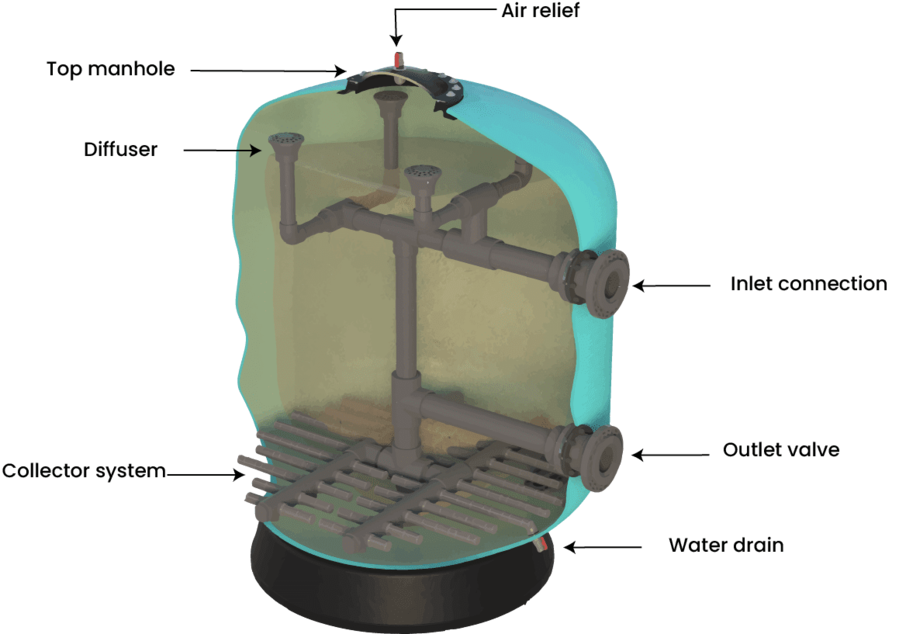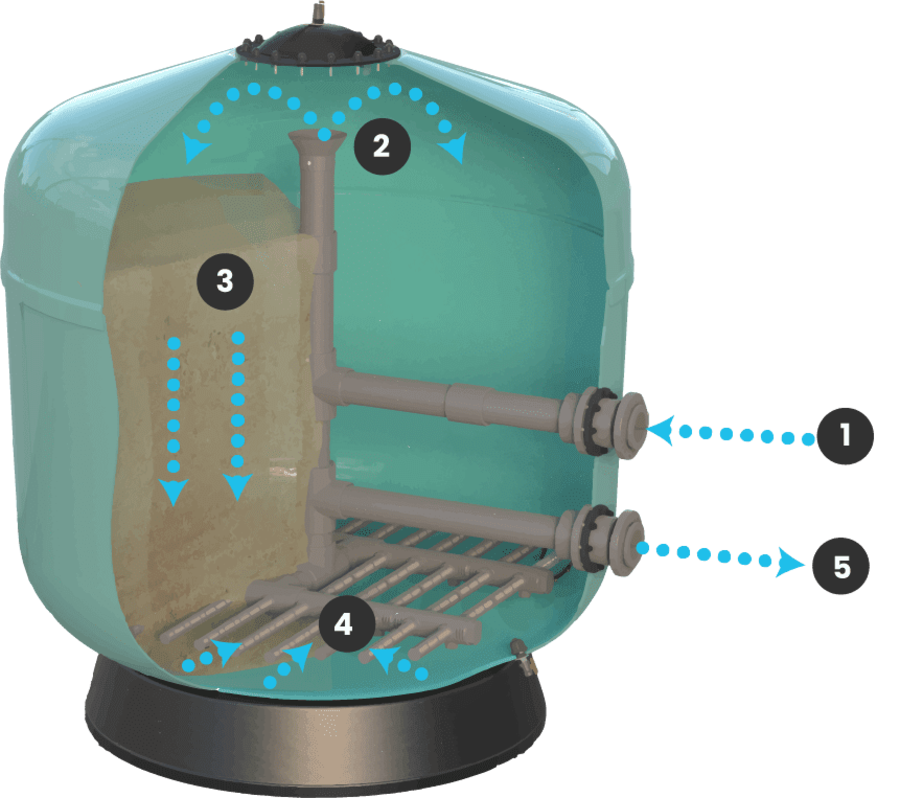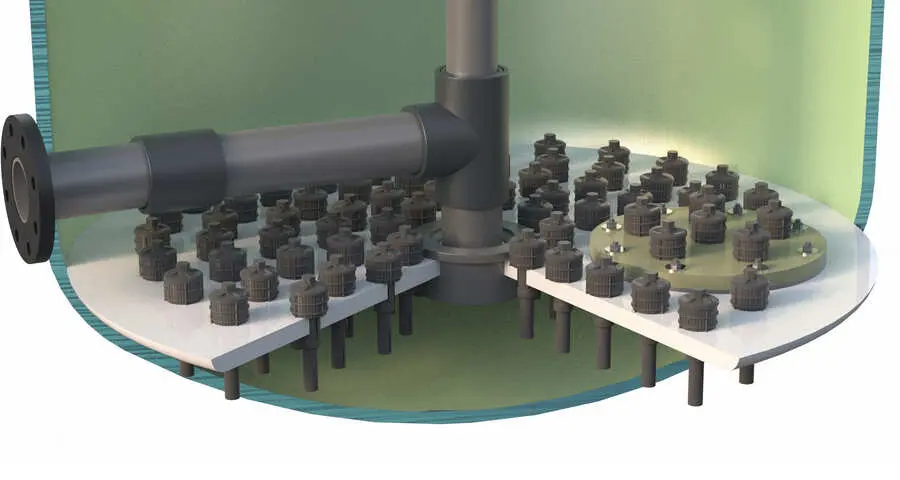Choosing a suitable filtration system for a pool can mean that you manage to get clean, transparent water using fewer resources.
A suitable filtration system for a pool plays a crucial role in the quality of the water, which will dictate the satisfaction of bathers. There are many factors to be taken into account in choosing a filtration system.
One of the keys to optimum disinfection is that all components are integrated, including the Salt Chlorinator, Neolysis and Freepool2 units or similar systems.
Based on our experience in water facilities, Fluidra has drawn up this short guide in which we have put together the most common FAQs about pool filtration.
Dive deeper with the eBook
Clean water is the main factor to meeting users’ expectations in water facilities.
A pool filtration system stands head and shoulders above all others in achieving an unbeatably clean pool. To understand how it works, its purpose can be compared to the kidneys in the human body: a pool’s filter removes the impurities that naturally build up in the water, in order to ensure that the rest of the components work properly.
One of its advantages is the possibility of reducing the amount of chemical products used to keep the water clean in sanitation processes, as filtration is responsible for removing most particles in suspension.
- Air relief. Found on top of the filter, it serves to release the air inside it.
- Top manhole. Its purpose is to load or extract the filter media, in addition to allowing access to the inside.
- Diffuser system. It carries and distributes the dirty water to the filter media, as well as collecting the dirty water from backwashing.
- Collector system. It collects the clean water from under the filter media and distributes the water from backwashing.
- Water inlet and outlet connections. They connect the filter’s multiport valves to interior components (such as the diffuser and collector systems).
- Filter media unload. Found underneath the filter, it serves to unload the filter media when it is replaced.
- Water drain. It empties the filter whenever necessary.
- Air washing with nozzle plates. This is the most efficient way of backwashing the filter media and makes it possible to save a great deal of water.

The way pool filters work could be understood as a circular path. The path the water takes in the filter starts in the uppermost connection, from where it is distributed inside the filter through the diffuser.
It then flows through the filter media found inside the filter. This is when particles of dirt are retained that have been suspended in the water.
The water travels to the collector system, which serves to collect the water that has already been filtered. Finally, the path ends in the bottommost connection, from where the water that has now been filtered and is clean flows back into the pool.

The filter media is the fundamental element in the filtration process. Made up of a number of granulated materials, it is responsible for retaining suspended particles so that they can be removed later.
When the filter media is tested, it is important to know that the efficiency of filtration will mainly depend on the size of the granules and their distribution. Thus, the smaller the filter media granulometry, the greater its capacity to trap particles. However, it clogs up more quickly, as a result of which it has to be backwashed more often.
Based on this information, it is also worth examining the different types and combinations of filter media.
- Layer of silica sand. This is the most common choice for pools with granules sized between 0.4 and 0.8 mm. It is placed on top of an underlayer of gravel, which is thicker than the sand.
- Multilayer of anthracite and silica sand. In this combination, the anthracite is placed on top of the silica sand as it is less dense but has a higher granulometry. Thus, the anthracite traps the larger particles and lets the smaller ones trickle down to the sand. The dirt is therefore spread across two layers, which avoids the usual problem of single-layer systems: the concentration of dirt in the first stretch of sand, which requires more frequent backwashing.
- Glass. This has become an increasingly widespread choice by pool owners since the beginning of the century. Its main advantage is the better distribution of trapped dirt, which spreads across the whole of the filter bed, thus minimizing the effect of clogging in the first stretch. This therefore means that less backwashing is required and the working pressure is reduced, as the glass filtration media has a lower head loss compared with silica sand.
Having looked into these issues and the importance of the filtration system, pool operators often have to ask themselves an important question: what should I take into account in choosing the most suitable filter?
To summarize, these are the main factors for taking this decision:
- The combination of the pool’s volume, the turnover time and the filtration speed will determine the size of the filter required.
- The height of the filter media, based on the fact that the greater the height, the higher the likelihood that particles of dirt will be trapped.
- Environmental sustainability, bearing in mind that a suitable filtration system for a pool can give rise to huge water savings. In this case, the most viable options are those that allow air washing and that have built-in nozzle plates as the filter collector system.

AstralPool’s filters have been designed to meet a pool’s filtration requirements as efficiently and sustainably as possible. Each product has been designed by a team of experts whose focus is ongoing improvement, functional design, the choice of high quality materials and meeting the most exacting quality standards.
In addition, we are well aware of the need to adapt the decision of choosing a pool filtration system to the requirements of each water facility. Therefore, based on our long-standing experience in the sector, we give advice about the most suitable product for every design.
